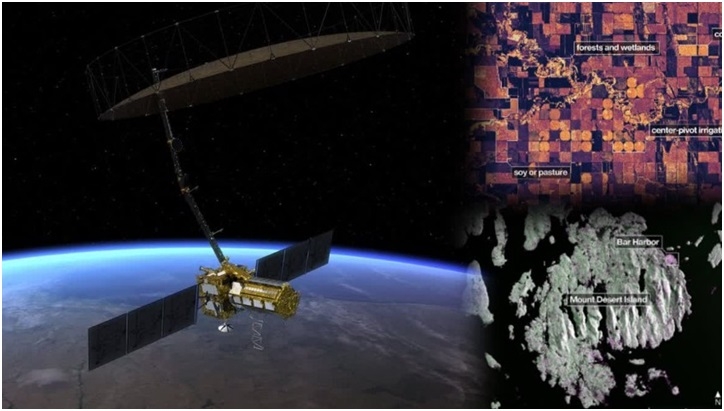Forests, Wetlands, Farmland: NISAR Satellite Sends First Images Of Earth Ahead Of Full Operation
Total Views |

The NISAR (NASA-ISRO Synthetic Aperture Radar) Earth-observing radar satellite has sent its first images, capturing the planet's surface and offering a glimpse of future science contributions as the joint mission between the US space agency NASA (National Aeronatics and Space Administration) and the Indian space agency ISRO (Indian Space Research Organisation) gets ready to start full science operations later this year.
The images, captured using the satellite’s L-band synthetic aperture radar (SAR) system, provided by NASA’s Jet Propulsion Laboratory in Southern California, demonstrate how NISAR can discern what type of land cover— low-lying vegetation, trees, and human structures—is present in each area. NASA says this capability is vital both for monitoring the gain and loss of forest and wetland ecosystems, as well as for tracking the progress of crops through growing seasons around the world.
The first picture (attached above), taken on August 21, 2025, captured Mount Desert Island on the Maine coast, where dark areas represent water, green areas are forest, and magenta areas are hard or regular surfaces, such as bare ground and buildings.
The second picture (attached above), taken on August 23, 2025, captured data of a portion of northeastern North Dakota straddling Grand Forks and Walsh counties, showing forests and wetlands on the banks of the Forest River passing through the centre of the frame from west to east and farmland to the north and south. In the picture, the dark agricultural plots are fallow fields, whereas the lighter colours represent the presence of pasture or crops, such as soybean and corn. Circular patterns indicate the use of centre-pivot irrigation.
A testament and a teaser for what's to come
The images from the spacecraft showcase NISAR’s ability to scan Earth in high detail, delivering unique and actionable insights to decision-makers across diverse fields, such as disaster response, infrastructure monitoring, and agricultural management.
“The successful capture of these first images from NISAR is a remarkable example of how partnership and collaboration between two nations, on opposite sides of the world, can achieve great things together for the benefit of all," said NASA Associate Administrator Amit Kshatriya.
Acting NASA Administrator Sean Duffy called the first images a testament to what can be achieved with a shared vision of innovation and discovery. Calling it just a beginning, he said, "NASA will continue to build upon the incredible scientific advancements of the past and present as we pursue our goal to maintain our nation’s space dominance through Gold Standard Science."
Nicky Fox, associate administrator, Science Mission Directorate at NASA Headquarters, called these images a testament to the years of hard work of hundreds of scientists and engineers from both sides of the world to build an observatory with the most advanced radar system ever launched by NASA and ISRO. “These initial images are just a preview of the hard-hitting science that NISAR will produce—data and insights that will enable scientists to study Earth’s changing land and ice surfaces in unprecedented detail while equipping decision-makers to respond to natural disasters and other challenges,” she added.
NISAR satellite at a glance
NISAR satellite, the first to carry both L-band and S-band SARs, was launched by ISRO on July 30. It will monitor Earth's land and ice surfaces twice every 12 days and collect data using the spacecraft's drum-shaped antenna reflector.
The L-band system from NASA uses a 10-inch wavelength to penetrate forest canopies to detect soil moisture and subtle land or ice movements, which is crucial for tracking shifts caused by earthquakes, eruptions, and landslides. The S-band from ISRO uses a 4-inch microwave signal that is more sensitive to small vegetation, making it effective at monitoring certain types of agriculture and grassland ecosystems.

